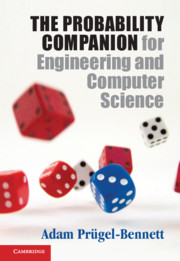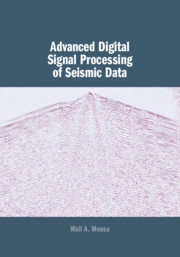Refine search
Actions for selected content:
6791 results in Communications and signal processing
14 - Tree-Based Learners
- from Part III - Nonlinear Learning
-
- Book:
- Machine Learning Refined
- Published online:
- 05 February 2020
- Print publication:
- 09 January 2020, pp 443-470
-
- Chapter
- Export citation
1 - Introduction to Machine Learning
-
- Book:
- Machine Learning Refined
- Published online:
- 05 February 2020
- Print publication:
- 09 January 2020, pp 1-18
-
- Chapter
- Export citation
Part I - Mathematical Optimization
-
- Book:
- Machine Learning Refined
- Published online:
- 05 February 2020
- Print publication:
- 09 January 2020, pp 19-20
-
- Chapter
- Export citation
Part III - Nonlinear Learning
-
- Book:
- Machine Learning Refined
- Published online:
- 05 February 2020
- Print publication:
- 09 January 2020, pp 273-274
-
- Chapter
- Export citation
Appendix C - Linear Algebra
- from Part IV - Appendices
-
- Book:
- Machine Learning Refined
- Published online:
- 05 February 2020
- Print publication:
- 09 January 2020, pp 546-563
-
- Chapter
- Export citation
References
-
- Book:
- Machine Learning Refined
- Published online:
- 05 February 2020
- Print publication:
- 09 January 2020, pp 564-568
-
- Chapter
- Export citation
9 - Feature Engineering and Selection
- from Part II - Linear Learning
-
- Book:
- Machine Learning Refined
- Published online:
- 05 February 2020
- Print publication:
- 09 January 2020, pp 237-272
-
- Chapter
- Export citation
11 - Principles of Feature Learning
- from Part III - Nonlinear Learning
-
- Book:
- Machine Learning Refined
- Published online:
- 05 February 2020
- Print publication:
- 09 January 2020, pp 304-382
-
- Chapter
- Export citation
5 - Linear Regression
- from Part II - Linear Learning
-
- Book:
- Machine Learning Refined
- Published online:
- 05 February 2020
- Print publication:
- 09 January 2020, pp 99-124
-
- Chapter
- Export citation

The Probability Companion for Engineering and Computer Science
-
- Published online:
- 03 January 2020
- Print publication:
- 23 January 2020

Advanced Digital Signal Processing of Seismic Data
-
- Published online:
- 24 December 2019
- Print publication:
- 16 January 2020
Introduction
-
- Book:
- Compressed Sensing in Radar Signal Processing
- Published online:
- 30 September 2019
- Print publication:
- 17 October 2019, pp xiv-xix
-
- Chapter
- Export citation
8 - Adaptive Beamforming via Sparsity-Based Reconstruction of Covariance Matrix
-
- Book:
- Compressed Sensing in Radar Signal Processing
- Published online:
- 30 September 2019
- Print publication:
- 17 October 2019, pp 225-256
-
- Chapter
- Export citation
1 - The Why and How of Machines
-
- Book:
- Inventing Cinema
- Published by:
- Amsterdam University Press
- Published online:
- 21 November 2020
- Print publication:
- 17 October 2019, pp 25-74
-
- Chapter
- Export citation
1 - Sub-Nyquist Radar: Principles and Prototypes
-
- Book:
- Compressed Sensing in Radar Signal Processing
- Published online:
- 30 September 2019
- Print publication:
- 17 October 2019, pp 1-48
-
- Chapter
- Export citation
Acknowledgements
-
- Book:
- Inventing Cinema
- Published by:
- Amsterdam University Press
- Published online:
- 21 November 2020
- Print publication:
- 17 October 2019, pp 9-10
-
- Chapter
- Export citation
Frontmatter
-
- Book:
- Compressed Sensing in Radar Signal Processing
- Published online:
- 30 September 2019
- Print publication:
- 17 October 2019, pp i-iv
-
- Chapter
- Export citation
11 - Compressed Sensing Methods for Radar Imaging in the Presence of Phase Errors and Moving Objects
-
- Book:
- Compressed Sensing in Radar Signal Processing
- Published online:
- 30 September 2019
- Print publication:
- 17 October 2019, pp 321-354
-
- Chapter
- Export citation
Bibliography
-
- Book:
- Inventing Cinema
- Published by:
- Amsterdam University Press
- Published online:
- 21 November 2020
- Print publication:
- 17 October 2019, pp 249-264
-
- Chapter
- Export citation
Dedication
-
- Book:
- Compressed Sensing in Radar Signal Processing
- Published online:
- 30 September 2019
- Print publication:
- 17 October 2019, pp v-vi
-
- Chapter
- Export citation
